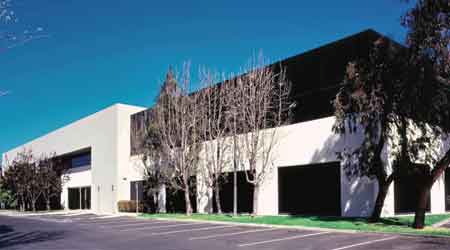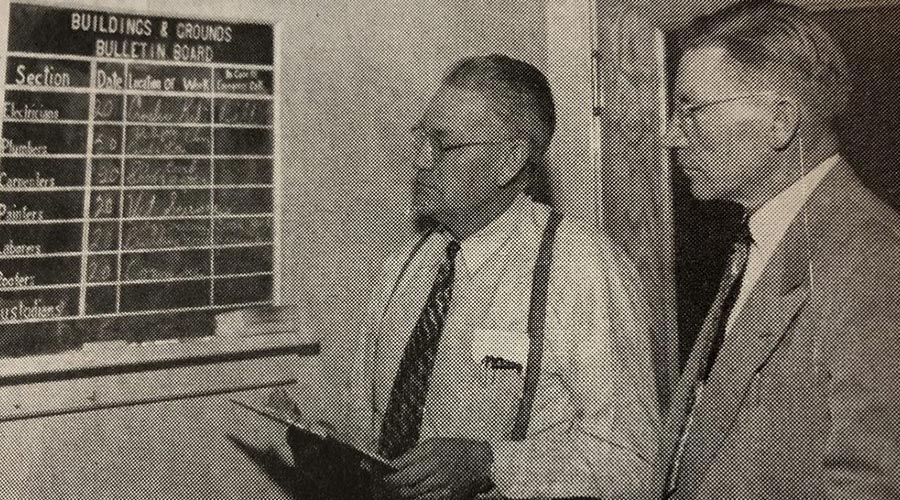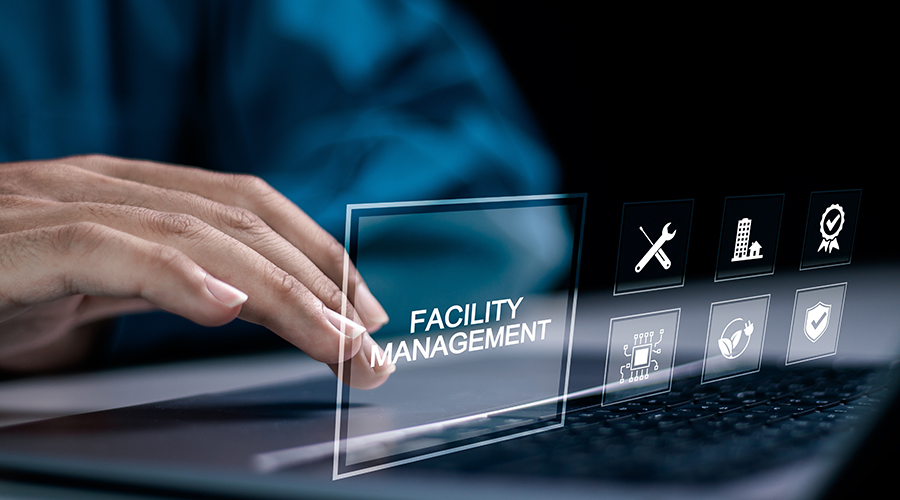Building Internet of Things Thrives on Free Flow of Data
Part 1 of a 2-part article on the Building Internet of Things in action.
While FMs have always know that buildings thrive on data, they can be forgiven for looking at their building automation systems and wondering what’s the big deal about the Building Internet of Things. The BAS in a very real sense is the original IoT. There’s nothing new about microchips being installed in components of building systems to assure they are working properly. Or about sensors reporting conditions back through the BAS’ network. For many years, field devices have been networked to control particular building systems via a centralized software platform. That software also is able to connect via the Internet so that the BAS can be controlled and monitored remotely.
But the Building IoT is far more than the latest release of BAS firmware. In fact, it’s more than the next generation of BAS.
“IoT begins turning data into knowledge,” says Jack McGowan, principal at The McGowan Group. “Buildings become self-aware and tell us when we are off track.”
The main components in the Building IoT are microchip-enabled sensors and controllers tied together on sophisticated IT level networks that can communicate with each other. “IoT opens up a whole new layer of functionality by overlaying systems that used to be locked in their own inaccessible data networks,” explains McGowan , author of the book Energy and Analytics: Big Data and Building Technology Integration.
IoT will allow the next generation of buildings to be self-aware and capable of reacting in real time without human intervention. “Currently, most facilities rely on a BAS with system programming that’s configured based on historical data,” notes Antonio D. Wright, director of technology solutions at McGuire Engineers. “With IoT, smart building systems utilize real-time data received from sensory devices to initiate system operations and satisfy peak performance requirements or meet comfort criteria for occupants.”
To visualize the Building IoT in action, imagine that a sudden thunderstorm has rolled into the area where a building is located. Using information from rooftop weather sensors that indicates a thunderstorm has struck, the lighting system increases illumination in occupied spaces. Meanwhile, those same rooftop sensors are telling the HVAC system to reduce cooling needs because the pouring rain is lowering the temperature of the building skin. The individual building subsystems do this by sharing data on the IoT network, without requiring human intervention. The same principle is visible in modern cars with collision-avoidance systems.
The Building IoT also promises to make buildings more responsive to occupants. “Currently, building systems are separate from the actual occupants and their specific needs,” says Herbert O. Els, senior vice president of building technology systems for WSP | Parsons Brinckerhoff. But the Building IoT could change that. “IoT would allow facilities to adjust the mean temperature in a conference room and the lighting levels to fit the actual occupants,” says Els. “IoT allows a more personalized environment in real time.”
Shared data also provides facility managers with more decision-making tools. “Once that data is shared, it enables a vast realm of possibilities in using that data to make decisions such as controlling equipment, integrating systems, analyzing trends, and monitoring status in real time,” says Rick Szcodronski, technology consulting senior associate with Environmental Systems Design (ESD).
McGowan suggests envisioning IoT as a building’s version of the plastic fitness bracelets many people sport today. “Think of IoT as a gateway to the building’s fitness awareness,” says McGowan. Not only would the building operate more efficiently, but unlocking the data via IoT could also provide facility management with better decision-making information.
What’s more, shared data can also be used to assist with maintenance and improve a system’s life cycle by identifying devices that need attention or are about to fail, Wright says.
“You could note how long a piece of equipment was down and calculate how much money was lost,” observes McGowan. “Through analytics and fault detection, IoT creates a transparency facility managers never had before.”
If some of this sounds pretty futuristic, it is. But the future is not that far away. In fact, IoT applications have already started to appear. For example, Wright notes that at least one valve manufacturer offers a pressure-independent control valve that uses two temperature sensors to monitor the delta temperature across a coil and also “can communicate the coil’s performance to a building automation system (BAS), a person, or a database,” Wright says.
For the Building IoT to reach its potential, data has to be able to flow freely across a wide range of systems and applications. While that isn’t the case today, progress is being made. “Current IoT-enabled devices utilize standard-based network communication protocols such as building automation protocols, voice/data network protocols, and Internet protocols,” Wright says. In commercial buildings, communication is not an issue in cases where a modern and robust infrastructure is installed, he says.
Lead photo caption: At Menlo Business Park, an IoT energy management platform pulls occupancy and temperature data from a network of smart occupancy sensors and provides it to the BAS via BACnet. The integrated system uses sensor data to turn off or down HVAC systems and reduce airflow based on occupancy, and to fine-tune thermostat setpoints based on micro-zone temperature measurements. Photo credit: Enlightened
___________________
IoT Series
This is the first article in our ongoing Building Internet of Things series.
Read the second article about startups here.
Read the third article about building automation systems here.
Read the fourth article about cybersecurity here.
Read the fifth article about LEDs here.
Read the sixth article about cross-industry collaboration here.
Read the seventh article about mobile here.
Read the eighth article about getting started with IoT here.
Related Topics:













